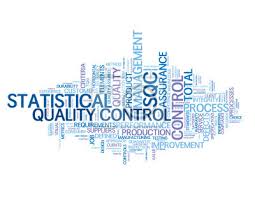- Teacher: JAIMOLE CROSS
- Teacher: MURTHY P S
Java is a popular general-purpose programming language and computing platform. It is fast, reliable, and secure and it is surprisingly true that Java runs on more than 3 billion devices worldwide. Therefore the course has been warily designed with the following objectives, for the students to learn the most happening and enduring technology.
· Appreciate and learn the fundamentals of object-oriented programming.
· Effortless Compiling and interpretation Skills involved in JAVA execution.
· Ease with Java SDK environment and error handling.
· Proficiency to work with Advanced Java concepts like Swing and its components.
· Aware of JDBC environment for Database connectivity and interactions.
· Overall enhanced programming skills and the ability to apply it.
Course outcome
Each Student is expected to possess the following caliber individually after successful completion of the course.
CO1 Profound Knowledge on Core Java Programming and its applications.
CO2 Ability to describe and implement the object oriented principles.
CO3 Competency for implementing core Java applications given.
CO4 Potential to understand and execute Advanced Java concepts.
CO5 Proficient enough to work with JDBC connectivity.
CO6 Confidence to exhibit the acquired concepts in terms of seminar, group discussion and programming challenges.

- Teacher: JAIMOLE CROSS
- Teacher: KAYAL Padmanandam
Prerequisites:
Before starting this course the students are expected to:
Þ know the concepts of probability and sampling techniques
Learning Objectives:
Understand how a control chart is used to detect assignable causes
Construct and interpret control charts for variables
Construct and interpret control charts for attributes
Construct single and double sampling plans
Understand the role of probability in systems reliability
LearningOutcomes:
At the end of the course, the student should be able to:
CO 1: Understand the concepts of quality control.
CO 2: Understand the concepts of process control and product control.
CO 3: Demonstrate the ability to design, use, and interpret control charts for variables.
CO 4: Demonstrate the ability to design, use, and interpret control charts for attributes.
CO 5: Explain the process of acceptance sampling and describe the use of operating characteristic (OC) curves
CO 6: Construct reliability of a system in parallel, series connections
Student learning outcomes will be evaluated based on quizzes, class tests, question and answer sessions at the beginning of every class, assignment and exams

- Teacher: JAIMOLE CROSS
| Course Objective: | ||||||||||||
| The objective of this course is to empower students to apply the concepts of software engineering in coherent manner to real life problems | ||||||||||||
| Course Outcomes:- | ||||||||||||
| Students
are expected to demonstrate: CO1. How to apply the software engineering life cycle by demonstrating competence in communication, planning, analysis, design, construction, and deployment of a software system CO2. an ability to design,analyze and interpret data. CO3. an ability to design a system, component, or process to meet desired needs of a customer. CO4. an ability to identify, formulate, and solve user end problems. CO5. an ability to use the techniques, skills, and modern engineering tools necessary for engineering practice. CO6. the ability to analyze, design, verify, validate, implement, apply, and maintain software systems. |
||||||||||||
| Rules of the Classroom/Lab: | • English will be the medium of
instruction and expression during the session • Must be in the classroom within 5 minutes from the start time of the session • Any clarification required on any topic must be communicated through email • An observation book to be maintained for the lab work |
|||||||||||
| Lab work | StarUML for dataflow diagrams and UML diargrams | |||||||||||
| Any two case studies from the practical question bank | ||||||||||||
| Reference for StarUML : - https://media.readthedocs.org/pdf/staruml/latest/staruml.pdf | ||||||||||||
| Assignment Schedule | Sample questions will be given at the end of each unit. Students must submit the answers of those questions within a weeks’ time | |||||||||||
| These assigments are not for evaluation. These assignments does not carry any marks | ||||||||||||

- Teacher: ANU VICTOR
Course Objective:
Students learn to describe some of the surfaces by using analytical geometry
Course Outcomes:
CO1: Equation, centre and radius of Sphere
CO2: Understand the concept of Sphere and circle
CO3: Find family of spheres Passing through a circle , tangent planes and normal lines to a sphere
CO4: Understand the concept of Radical plane
CO5: Representing a cone , cone and a plane
CO6: Concept of the Right Circular Cone, the Cylinder, the Right Circular Cylinder
CO7: The General Equation of a conicoid, Intersection of Line with a Conicoid
CO8: Concepts of Plane of contact, Enveloping Cone and Cylinder
- Teacher: DAYANANDA BABU V
